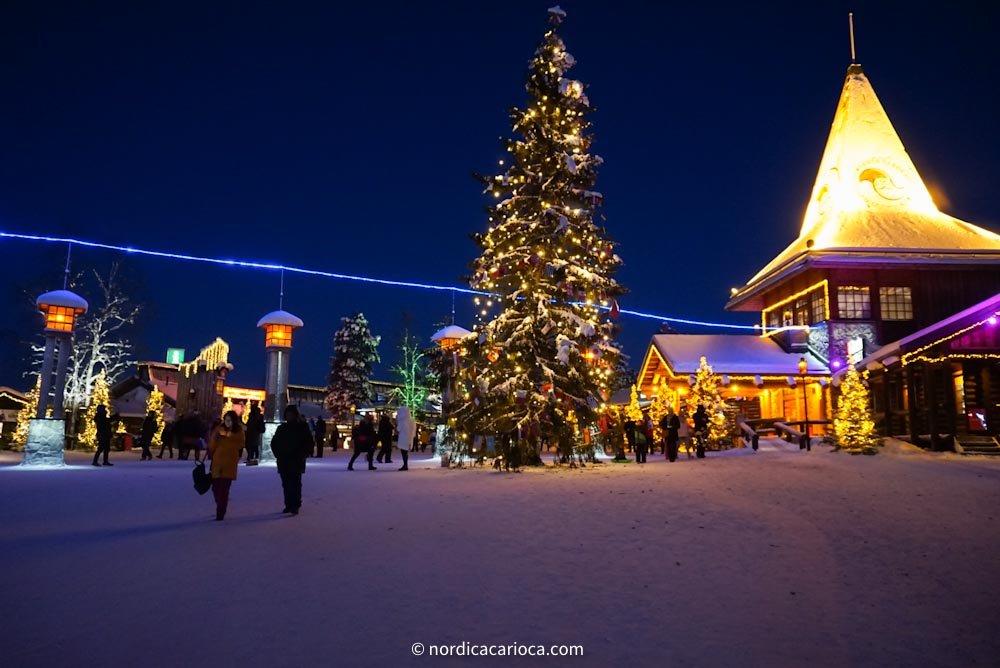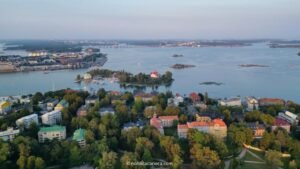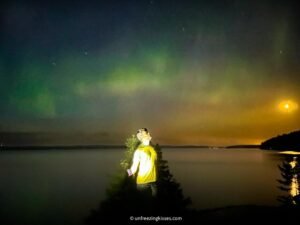WELCOME TO
FINLAND
Travel Guide
Finland is the land of a thousand lakes and endless beauty. From the breathtaking wilderness of Lapland, where the Northern Lights dance across the sky, to serene lakes and untouched forests, Finland invites you to explore its natural wonders and tranquil charm.
Facts
Language
Finnish, Swedish
Currency
Euro
Capital
Helsinki
Religion
65,6% Christianity, 33,6% No religion, 0,8% others
Finland Travel Essentials
Find Hotels
Booking.com
Find Hostels
Hostelworld
Rent a car
Rentalcars
Book Tours
GetYourGuide
Get a Travel Insurance
SafetyWing
Book a Train ticket
vr.fi
LAPLAND
How often do we actually experience total silence? Being in places like Lapland, where the only sounds are the whispers of nature, can have such a calming effect. It clears the mind, fuels creativity, and restores your energy. But for some, silence can feel uncomfortable. Why is that? Maybe it’s because we’re so used to the constant noise around us. But maybe, just maybe, that’s where the magic lies. In those quiet moments, when we stop filling the space with noise, we can finally hear ourselves—and connect with something deeper.

10-Day Winter Itinerary to Finnish Lapland (No Car Needed!)
Welcome to Finnish Lapland, a land of sparkling snow, magical auroras, and unique Arctic adventures. This stunning destination is home to fluffy snow-laden fells, cozy saunas, reindeer safaris, and charming villages.

The Ultimate Winter Travel Guide to Levi, Finland
Dreaming of snow-covered landscapes, exhilarating winter sports, and a chance to see the Northern Lights? Levi, Finland, is one of Lapland’s gems and a perfect winter destination. With its charming atmosphere, cozy accommodations, and endless activities, Levi offers an unforgettable experience for travelers of all kinds.

How to See the Northern Lights in Lapland, Finland?
Often described as nature’s most spectacular light show, the Aurora Borealis, or northern lights, is a must-see for any traveler. If you’ve always dreamed of gazing at the shimmering green and purple hues dancing across an Arctic sky, Lapland, Finland, is one of the best places in the world to make it happen. From the best times to visit and top viewing spots to tips on capturing this natural wonder, this guide has everything you need to turn your northern lights dreams into reality.

Ultimate sauna guide: How to experience Finland’s sauna culture for wellness
Saunas are an integral part of Finnish culture, offering not only a relaxing experience but also a wealth of health benefits. Finland has more than 3 million saunas for its 5.5 million residents, highlighting the nation’s deep cultural connection to this relaxing tradition.

Travel guide to Saariselkä, Finland – Winter Edition (2023-2024): Discover the top things to do!
Saariselkä is a small village located in the far north of Finland, known for its beautiful winter landscape and arctic outdoor activities. It is a popular destination for tourists looking to experience traditional Finnish culture and outdoor adventures.

The Ultimate Travel Guide to Rovaniemi, Finland – Winter Edition (2024)
Located in north Finland, Rovaniemi is a magical winter wonderland that attracts tourists from all over the world. Known as the “official hometown” of Santa Claus, this city offers an abundance of activities and experiences for travellers seeking a unique winter vacation.
FAQ
Yes, English is widely spoken in Finland. In fact, it is considered the second most commonly spoken language in the country after Finnish.
English is taught as a compulsory foreign language in Finnish schools from an early age, so many Finns are proficient in speaking and understanding the language. It is also commonly used in higher education, business, and tourism.
However, it should be noted that while English is widely understood and spoken in urban areas and among younger generations, there may still be some language barriers in more rural or remote areas. In these cases, it may be helpful to learn some basic Finnish phrases or use translation tools.
The Northern Lights can be seen from August to April. To witness this natural phenomenon, it is important to have dark nights. However, keep in mind that weather conditions also play a role.
The short answer is yes, Finland can be pricey to visit, but you can also make it affordable.
Accommodation can be one of the biggest expenses for travelers. In big cities like Helsinki and Tampere, hotel prices can range from 100e to 500e/night, averaging around 200e during the summer. For those on a budget, there are options such as hostels and Airbnb rentals available at more affordable rates.
Food and drinks can also add up quickly. Dining out at restaurants can be costly, with prices for a meal around 15-50 euros. However, there are also more budget-friendly options like food trucks and markets where you can try local cuisine at a lower cost. At lunchtime, there are cheaper deals that normally also include coffee or tea. A glass of wine usually costs about 10e, so having drinks out can get pretty pricey.
Transportation in Finland can also be pricey. The country boasts an efficient public transportation system, but the costs of train and bus tickets can add up over time. Renting a car is another option, but it may be more expensive due to high gas prices.
But despite these expenses, there are ways to save money while visiting Finland. Many attractions and activities such as hiking trails and museums offer free admission. Additionally, taking advantage of the Finnish tradition of “mökkilife” (cottage life) and spending time outdoors in nature is a budget-friendly way to experience the country.
Yes, it is possible to visit Finland without a visa depending on your nationality and the purpose of your trip. Citizens from certain countries are exempted from needing a visa for short stays in Finland.
Under the Schengen Agreement, citizens of EU/EEA countries can enter Finland with just a valid passport or national ID card. This also applies to citizens of Switzerland, Iceland, Norway, and Liechtenstein.
For citizens of non-EU/EEA countries, they may be eligible for visa-free entry if they hold a valid residence permit issued by an EU/EEA country or have a valid Schengen visa. This allows them to stay in Finland for up to 90 days within a 180-day period.
If your country is not included in the list of visa-exempt countries, you will need to apply for a Schengen visa at the nearest Finnish embassy or consulate. The application process may vary depending on your country of residence, but generally requires submitting an application form, supporting documents such as proof of accommodation and travel insurance, and paying a fee.
It is important to check the specific entry requirements for your country before making any travel plans. For more information and updates regarding visa requirements for visiting Finland, you can refer to the website of the Ministry for Foreign Affairs of Finland.
The coldest month in Finland is usually January, with average temperatures ranging from -10°C in Lapland to -3°C in Helsinki. However, the actual temperature can vary depending on the location and year. In Lapland, the northernmost part of Finland, temperatures can drop as low as -45°C during this month.

Best time to visit Finland?
The best time to visit Finland is either in the summer or winter, depending on what you like and the activities you want to try. Winter: The peak season in Finland is during the winter months of December to end of March. This is when the country experiences heavy snowfall and freezing temperatures. The well-known Santa Claus Village in Rovaniemi and other spots in Lapland attracts tourists from all over the world during this time. If you are a fan of winter sports and activities, then this is the best time to visit Finland. This is also a great time to catch the Northern Lights with those long, dark nights. Summer: The summer months in Finland run from June to August. This is when the country experiences long days with almost 24 hours of daylight in the northern regions. The warm weather during this time makes it perfect for outdoor activities such as hiking, camping, and fishing. If you prefer milder temperatures and want to explore the beautiful Finnish nature, then summer is the best time to visit. Autumn: September to November is considered the shoulder season in Finland. The weather starts to cool down, and the leaves change colors, making it a picturesque time to visit. Prices for accommodations and attractions tend to be lower during this time compared to peak season, making it an ideal time for budget travelers. You can already catch the northern lights around this time of year. Spring: From April to May, Finland experiences its spring season. The snow starts melting, and nature comes back to life with beautiful flowers blooming everywhere. The temperatures are mild, making it a comfortable time for exploring the cities and towns.



